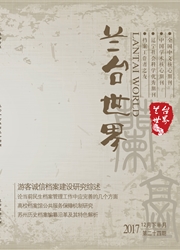

 中文摘要:
中文摘要:
目的探讨体外膜氧合用于心脏死亡后捐献供肝的初步经验。方法方便选取2014年12月—2015年12月在该院心脏死亡后捐献肝脏组织的30例患者进行探讨,根据器官保护方式的不同将其分为研究组(20例)和对照组(10例),对照组热缺血30 min后予以原位冷灌注,UV液保存肝脏,研究组患者采用体外膜氧合技术保持器官直至获取,并比较两组肝脏组织病理改变以及肝功能水平。结果研究组患者热缺血30 min后其肝脏组织变为乌黑淤血,体外膜氧合辅助再循环后,肝脏组织缓慢恢复至正常饱满鲜红状态,对照组患者储存4 h后可见肝细胞轻度水肿、肝窦扩张。研究组患者ALT和AST水平分别为(51.5±12.4)U/L和(46.0±23.3)U/L,对照组患者分别为(76.1±33.4)U/L和(150.0±29.3)U/L,两组比较差异具有统计学意义(P〈0.05)。结论体外膜氧合用于心脏死亡后捐献供肝具有保护作用,该方法值得推广应用。
 英文摘要:
英文摘要:
Objective Discussion extracorporeal membrane oxygenation initial experience after cardiac death donation donor used.Methods Convenient select the December 2014 to December 2015 in our hospital cardiac death donor liver tissue of30 patients were discussed, according to the different organs of protection will be divided into study group(20 cases) and control group(10 cases), thermal control group after ischemia 30 min to be in situ cold perfusion, UV was stored liver, the study group were treated with extracorporeal membrane oxygenation techniques to hold the organ until the acquisition, and compared the two groups of liver histopathology and liver function. Results Study patients warm ischemia 30 min after his liver congestion becomes black after extracorporeal membrane oxygenation secondary recycling, slowly returned to normal liver tissue full red state, the control group of patients seen after 4h store hepatocyte edema, sinusoidal expansion. ALT and AST levels in patients with the study group were(51.5 ± 12.4) U / L and(46.0 ± 23.3) U / L, the control group of patients,respectively(76.1 ± 33.4) U / L and(150.0 ± 29.3) U / L, The difference was statistically significant(P〈0.05).Conclusion Extracorporeal membrane oxygenation for liver donation after cardiac death has a protective effect, which should be widely applied.
 同期刊论文项目
同期刊论文项目
 同项目期刊论文
同项目期刊论文
 期刊信息
期刊信息
